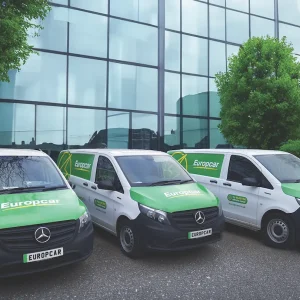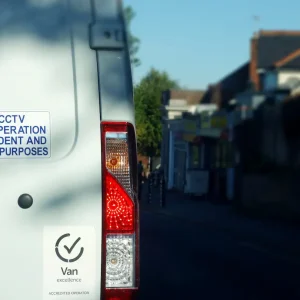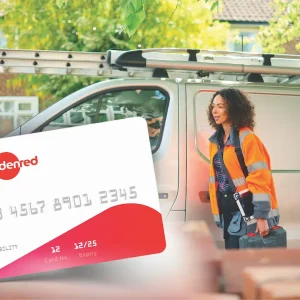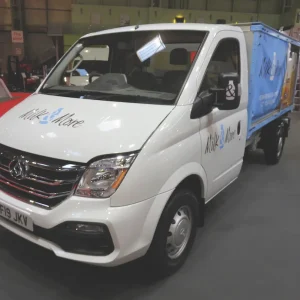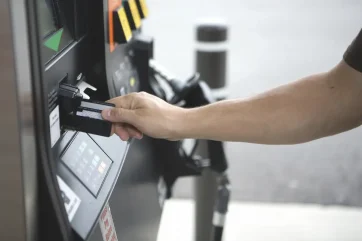
Fuel card suppliers should perhaps consider referring to their products as energy cards instead. While the number of electric vans in service is modest at present, it looks set to grow; and users will increasingly be looking for fuel cards that can be used to recharge them in the same way that they can be used to pay for diesel or petrol.
It is a development that has not been lost on card providers.
An Allstar Chargepass is now available which is accepted at over 19,000 locations encompassing more than 51,000 chargers. Networks accepting Chargepass include InstaVolt, Osprey, Gridserve, and ChargePlace Scotland.
The newcomer replaces the old Allstar One Electric card and can also be used to buy diesel and petrol. That is a useful facility for firms that run some battery-powered vans, but rely primarily on vehicles that are conventionally fuelled.
In this context it is worth noting that service stations increasingly feature charging points as well as petrol and diesel pumps.
Allstar Chargepass is by no means the only option.
To cite one or two alternatives, card provider Fleetmaxx Solutions points out that the Shell Hybrid card is also available and is accepted at over 3,880 filling stations with more than 11,000 chargers. It too is suitable for operators with diesel, petrol or electric light commercials.
The Shell Recharge electric charging card can also be used at upwards of 11,000 charging points.
This type of card typically contains a RFID (Radio Frequency IDentity) tag, so all the driver needs to do is tap it against the charge point reader.
The choice of card and network is likely to be influenced by where your vans travel. If they typically go all over East Anglia then a network that is weak in the east of England, but strong in the Midlands, is unlikely to be your best choice.
Branching out
Some fuel card providers are extending their activities beyond the provision
of plastic.
Fuel Card Services (FCS) has recently acquired telematics specialist Cubo. As a consequence it can now offer customers the ability to track their vans and monitor the on-highway behaviour of their drivers, with onboard cameras available if required.
Not to be outdone, trade associations and businesses that provide a variety of different services to vehicle operators are offering fuel cards as part of their affinity programmes. Among the latest is fleet software and management specialist FleetCheck, which has introduced a card in conjunction with FCS.
It offers savings of up to 10p a litre on the posted pump price of petrol and diesel. Such a saving is not untypical, and is a key reason for going the fuel card route rather than relying on credit or debit cards.
A plus-point of many fuel cards is that they offer users a fixed weekly price for their fuel that is valid wherever they buy it, making budgeting and managing cash flow much easier. Another is that it gives users an additional line of credit.
One of the biggest advantages of a fuel card however is the amount of invaluable information it can generate.
Van operators can see whereabouts fuel (or electricity) was purchased and when, how much was purchased and how much was paid for it. They can then identify which of their vehicles and drivers is consuming the most energy and investigate further if necessary.
Maybe there is a fault on a van which needs rectifying. Maybe the driver is prone to speeding and accelerates too fiercely, or perhaps the vehicle is carrying far more weight than it should be.
There is also the possibility that fuel is being siphoned off into a jerry can and ending up in the driver’s own car.
The consolidated fuel invoice that is provided aids VAT reclamation, and CO2 figures can be obtained to give firms a better idea of the size of their carbon footprint.
Do not depend solely on fuel cards for mileage data, however, if you want accurate fuel consumption figures, advises FleetCheck managing director, Peter Golding. Check any figures given against figures from an onboard tracking system.
“If you are relying on drivers to enter mileage figures when they are purchasing fuel then they may get the figure wrong or make it up,” he remarks.
The data generated by FleetCheck’s FCS plastic can be imported automatically into FleetCheck’s own fleet management software, says Golding. “That allows operators to integrate fuel into an accurate picture of their overall fleet costs, generating reports that provide an extremely high level of insight and creating the possibility of gaining further control over expenditure on petrol, diesel and electricity,” he observes.
It also helps fleets determine the relative running costs of electric and fossil fuel vehicles, and which is currently the most cost-effective option.
Comparing costs
Bear in mind that some forecourts can be a lot pricier than others. The ones at supermarkets tend to be cheap so issuing drivers with cards that they accept makes sense, along with an instruction that supermarkets should be used wherever practicable.
Motorway service areas should be avoided wherever possible, however, because their prices are a lot higher than those charged by forecourts on local roads. “If diesel is £1.50 a litre at your local fuel station then it is likely to be as much as £1.80 on the motorway,” comments Golding.
Motorway electricity prices are eye-wateringly high too, he says. So don’t charge your van at a service area unless you really have to.
“If you’re using a home charger on your drive – and not all van drivers have access to one – then you might be paying 8p to 10p a kW,” he observes. “On the motorway it could be as much as 70p to 80p a kW.”
When discussing how much discount might be available on the per-litre price of fuel, do not forget to bring the per-kW price of electricity into the equation if you run battery vans. If you don’t ask, you don’t get.
Fuel cards can be limited to the purchase of fuel, electricity, AdBlue and vehicle wash tokens which means that drivers cannot use them for sneaky purchases of coffee, snacks and vapes.
Limits can also be imposed on how much can be spent by a driver at a time, along with restrictions on the days and times that the card can be used: only from Monday to Friday, for example, and never at weekends. That odd amount of petrol purchased on a Sunday morning might be going into a car owned by the driver’s mum, and is likely to jump out at you if your employee’s van is a diesel.
Fortunately restrictions on the type of fuel that can be drawn can be implemented.
When a driver leaves your company, make sure you get any fuel cards he has in his wallet back from him before he departs. He might be tempted to try to use them illicitly.
If you forget to retrieve them, then get them blocked immediately.
Asking price
Fuel card suppliers charge businesses that use their plastic a fee. It can range from a few pounds a year to a few pounds a month for each light commercial you operate, depending on the size of your fleet and the volume of fuel you purchase.
While these amounts look modest on the face of it, they can soon add up and need checking regularly, warns Fleetmaxx Solutions marketing manager, Steve Clarke.
“Many fuel card suppliers may make hidden charges for services you weren’t aware of or didn’t agree to, such as carbon counting and card protection,” he observes. “Review your invoices accordingly, and don’t forget that some companies have software that automatically increases prices over time.
“This means that an attractive introductory price may not last.
“Some suppliers charge a fee every time you fill up,” Clarke continues. “That can sometimes be as much as £2.00 for each transaction.
“This practice may not be right for you if you are trying to cut costs, so you should look for a provider/card that does not impose transaction charges.
“If you are paying an annual fee then assess whether the benefits you receive justify this cost,” he advises. “Calculate how much fuel you need to purchase annually to begin saving money.
“Some cards have a high minimum spend, which may not be suitable for small businesses,” Clarke adds. “Others may charge a higher annual fee if you have a small fleet.
“Make sure the card’s terms align with the size and needs of your business.”
When it comes to settling fuel card bills the payment cycle means that businesses typically enjoy around a fortnight’s worth of credit; clearly more than you get if you pay with a debit card or with cash, but less than you get if you use a credit card.
That said, major fleets may be able to negotiate better credit terms with their fuel card supplier.
What if you happen to be a start-up with no credit history?
Prepaid cards are available which businesses in that situation can use. They can switch to a conventional account once they have established a credit track record and are viewed by card providers as a dependable payer.

